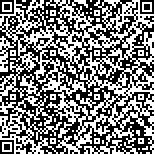| 引用本文: | 蒋杰,刘福荣,王伶,张谊芳,王佳良,石夏莹,卢晓阳.药学干预对老年住院患者用药复杂性和安全性的影响[J].中国现代应用药学,2019,36(19):2454-2459. |
| JIANG Jie,LIU Furong,WANG Ling,ZHANG Yifang,WANG Jialiang,SHI Xiaying,LU Xiaoyang.Effects of Pharmaceutical Intervention on Medication Complexity and Safety for Elderly Inpatients[J].Chin J Mod Appl Pharm(中国现代应用药学),2019,36(19):2454-2459. |
|
| |
|
|
| 本文已被:浏览 2665次 下载 1528次 |

码上扫一扫! |
|
|
| 药学干预对老年住院患者用药复杂性和安全性的影响 |
|
蒋杰1,2, 刘福荣2, 王伶2, 张谊芳2, 王佳良2, 石夏莹2, 卢晓阳1,3
|
|
1.浙江大学药学院, 杭州 310058;2.绍兴文理学院附属医院药剂科, 浙江 绍兴 312000;3.浙江大学附属第一医院药学部, 杭州 310003
|
|
| 摘要: |
| 目的 评价药学干预对老年住院患者用药复杂性和安全性的影响。方法 对65岁以上的老年住院患者进行1项干预前后的对照研究,干预组由临床药师主导药学干预过程,采用药物治疗方案复杂性指数(medication regimencomplexity index,MRCI)、Beers标准2015分别评估老年患者在入院和出院时长期用药方案的用药复杂程度(medication regimen complexity,MRC)和潜在不适当用药(potentially inappropriate medicines,PIMs),并向临床医师提出简化用药方案的建议。比较2组患者在药学干预前后MRCI评分、PIMs发生率、药品不良事件(adverse drugevents,ADEs)发生率、用药依从性和患者对药学服务满意度的差异。结果 未干预组和干预组患者住院后的MRCI与入院时相比均有明显增加(P<0.01或P<0.05),但干预组入院至出院时MRCI评分的平均增加幅度明显小于未干预组[(5.4±5.9)分vs(2.3±5.6)分,P<0.01];与未干预组相比,干预组出院时的PIMs发生率由入院时的57.0%下降至42.9%(P<0.01);药学干预使患者的用药依从性和药学服务满意度显著提高,ADEs发生率显著降低(P<0.01),但对平均住院天数的影响差异无显著性。结论 对老年住院患者实施一项以用药方案的简化为主要内容的药学干预,有效降低了住院对MRC和PIMs的影响,提高了老年患者用药的安全性、经济性和合理性。 |
| 关键词: 药学干预 老年患者 用药复杂程度 潜在不适当用药 对照研究 |
| DOI:10.13748/j.cnki.issn1007-7693.2019.19.017 |
| 分类号:R952 |
| 基金项目:浙江省药学会医院药学专项科研资助项目(2017ZYY33) |
|
| Effects of Pharmaceutical Intervention on Medication Complexity and Safety for Elderly Inpatients |
|
JIANG Jie1,2, LIU Furong2, WANG Ling2, ZHANG Yifang2, WANG Jialiang2, SHI Xiaying2, LU Xiaoyang1,3
|
|
1.College of Pharmaceutica Sciences, Zhejiang University, Hangzhou 310058, China;2.Department of Pharmacy, Affiliated Hospital of Shaoxing University, Shaoxing 312000, China;3.Department of Pharmacy, The First Affiliated Hospital, Zhejiang University, Hangzhou 310003, China
|
| Abstract: |
| OBJECTIVE To evaluate the effects of pharmaceutical intervention on medication complexity and safety for elderly hospital inpatients. METHODS A before-after intervention study involving patients aged 65 years and over was carried out. Clinical pharmacists participated in the programs of pharmaceutical intervention and made recommendations to hospital medical officers to simplify regimens in the intervention group. Medication regimen complexity(MRC) and potentially inappropriate medicines(PIMs) was measured by the medication regimen complexity index(MRCI) and Beers Criteria 2015 between admission and discharge for regularly scheduled long-term medications respectively. Then the MRCI score, the proportion of PIMs, and the incidence rate of adverse drug events(ADEs) were observed in both phases and the medication compliance, and the satisfaction were compared. RESULTS The MRCI score at discharge was significantly higher than at admission in the no-intervention group and the intervention group(P<0.01 or P<0.05), but the mean increase in MRCI score between admission and discharge was significantly smaller in the intervention patients than in the no-intervention patients[(5.4±5.9) points vs (2.3±5.6) points, P<0.01]. Compared with the no-intervention group, the proportion of patients prescribed at least one PIMs decreased significantly, from 57.0% to 42.9% at discharge between two groups(P<0.01). After pharmaceutical intervention, the drug adherence outstanding rate and pharmacy service satisfaction were significantly better than those in the no-intervention group, whereas the incidence rate of ADEs was quite lower(P<0.01). However, there was no significant difference in the average hospitalization time between the two groups. CONCLUSION A pharmaceutical intervention with medication regimen simplification can not only reduce the impact of hospitalisation on MRC and the proportion of PIMs, but also improve the safety, economy and rationality of drug use in elderly patients. |
| Key words: pharmaceutical intervention elderly patient medication regimen complexity potentially inappropriate medicines comparative study |
|
|
|
|
